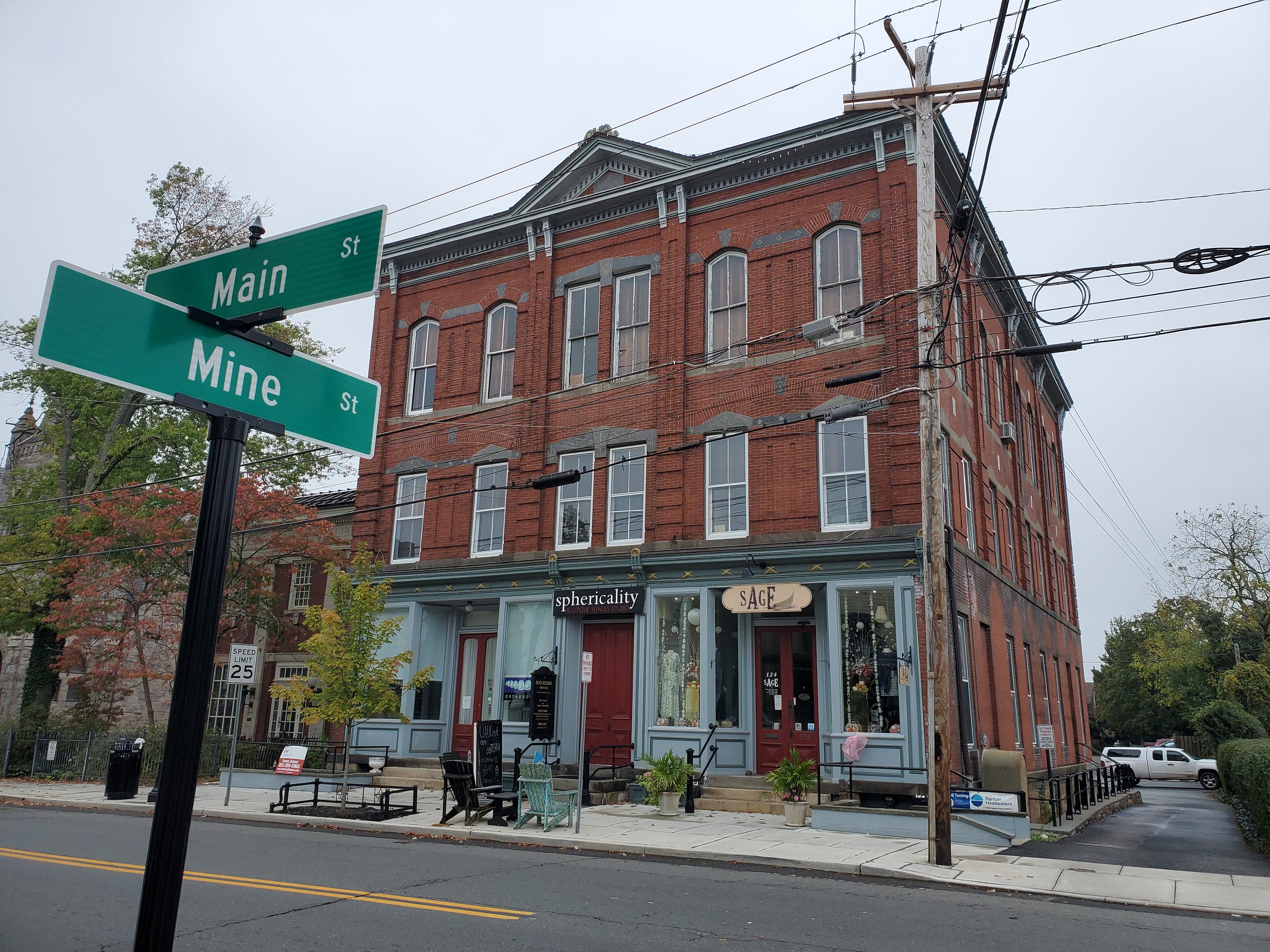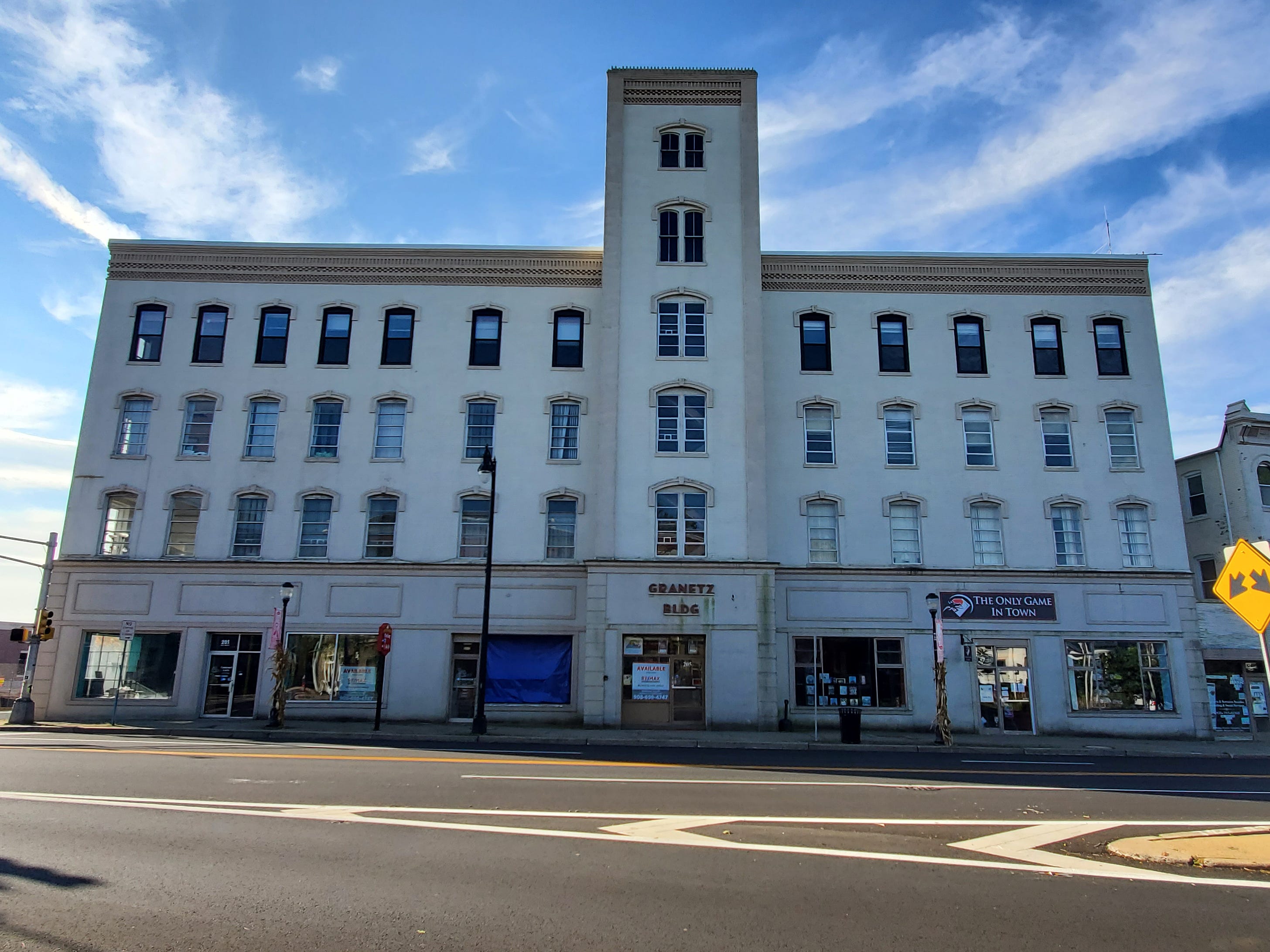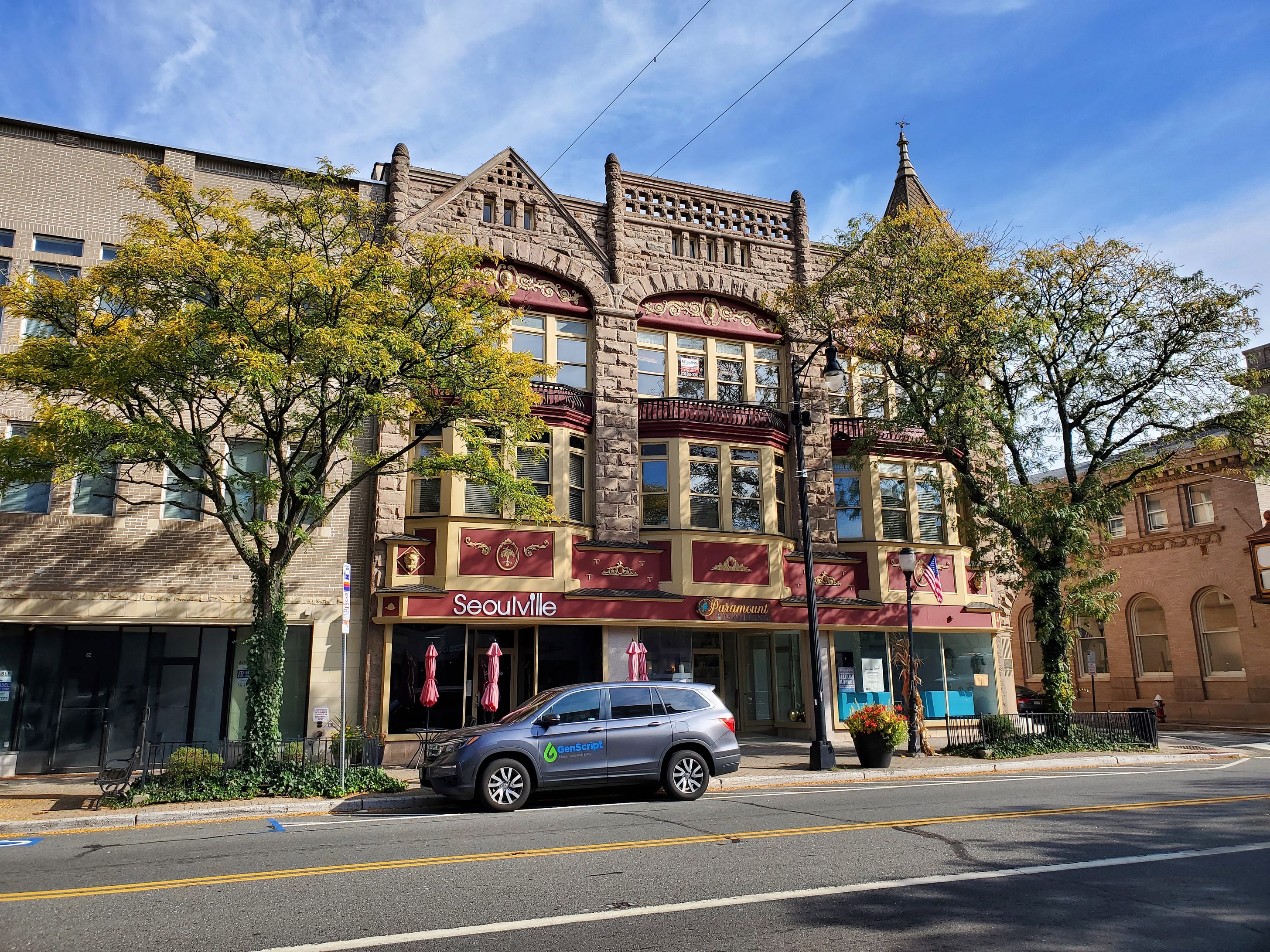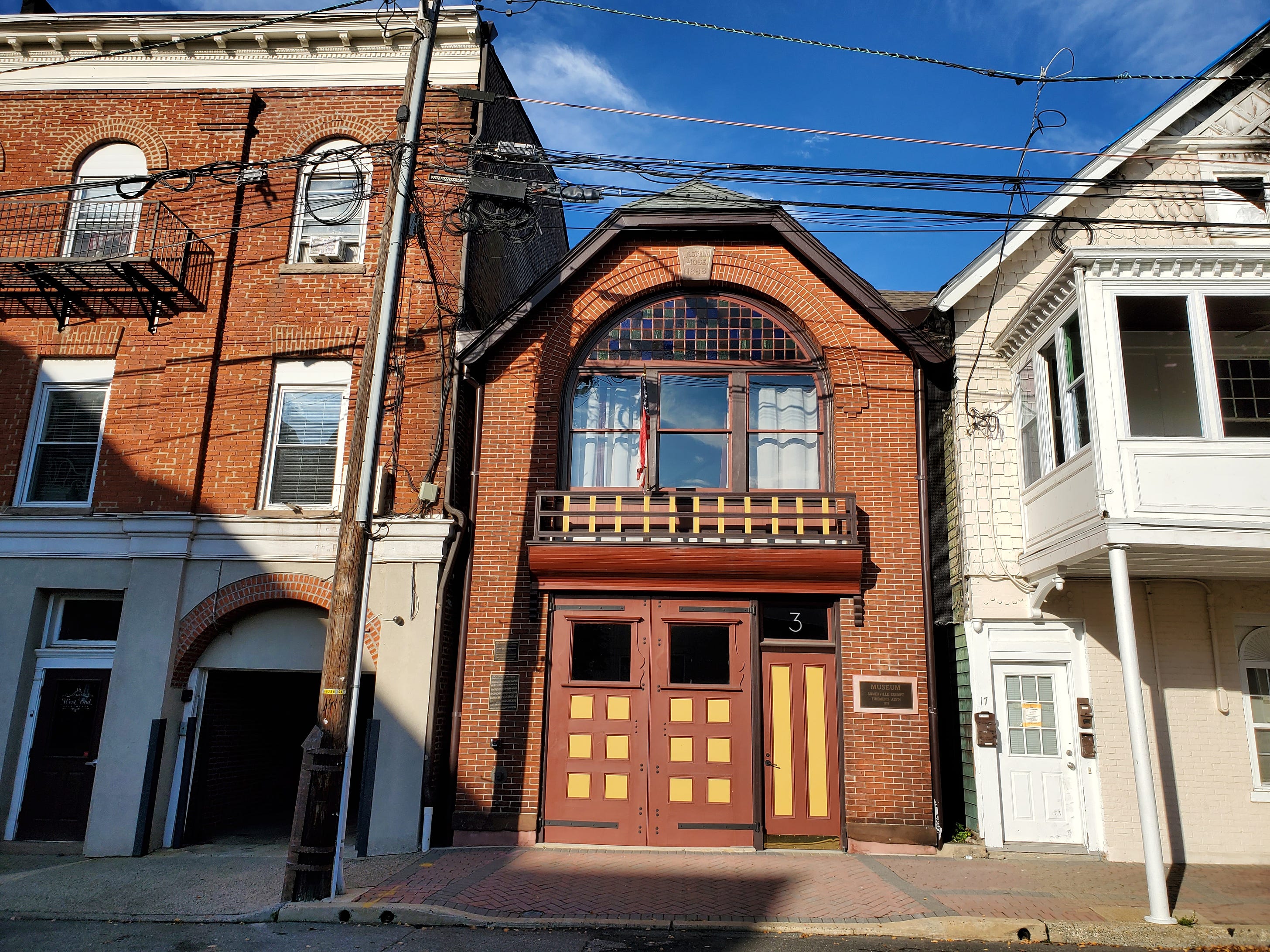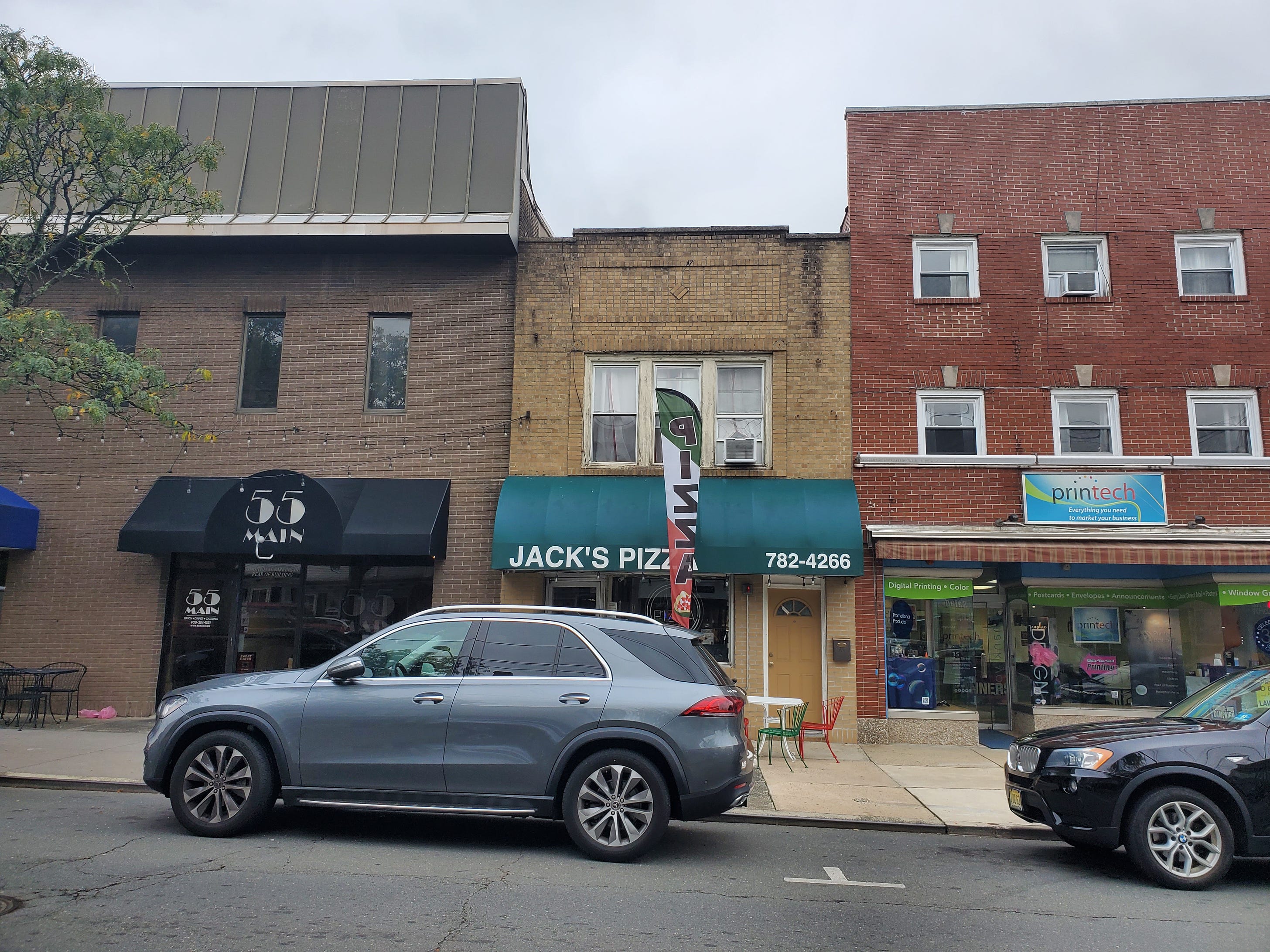The Deleted Scenes - Another Look at Two New Jersey Towns
I’ve written a fair bit about Flemington and Somerville, two small towns in Central Jersey (which very much exists.) They’re places I know very well, and they’re also often compared and contrasted in debates over development in the area. I didn’t grow up in downtown Flemington itself, but I did grow up saying I lived in Flemington. And if we went into town to stroll Main Street, grab a slice of pizza or Italian ice, or visit the library, it was usually in Flemington. In yesterday’s link roundup, I featured a great blog post by a young downtown Flemington business owner, on a big redevelopment project right in the middle of Main Street. It’s a partial teardown/major renovation of the historic Union Hotel and surrounding area. The Union Hotel was one of those small, grand hotels that hundreds of small towns, particularly rail towns (as Flemington once was, and Somerville is) had in the 19th century. Many of them are already gone, and while it’s sad that the hotel was not continuously maintained over the years, at least the main portion of it facing Main Street will survive. This project, and another upcoming one on the site of the old Liberty Village outlet mall, seems to be pretty popular, if only because the alternative is derelict properties in the heart of town. Several years ago NIMBY sentiment might have won out, and indeed for many years it did. The reactions I’ve seen range from dismay to resignation to grumbling acceptance to enthusiasm. But a lot of acceptance, even if not enthusiastic. (Then there’s the handful of people who think the new, mostly market-rate apartments being built in town are a Democrat plot to swamp Flemington with illegals. I don’t care for the progressive talking point that housing policy is analogous to immigration policy, but those folks seem to agree with it!) Some of the most interesting responses I’ve seen, however, have been those which make reference to Somerville. Some people are happy that Flemington is finally making moves to be more like Somerville. And others are dismayed that Flemington is going to “turn into another Somerville.” So, what’s the big deal about Somerville? I profiled it here. It’s larger and somewhat more urban than Flemington, but its development pattern and overall feel is still far more small-town than big-city. Mostly, to me, it just has more restaurants, stores, and street life. I struggle, honestly, to understand what dividing line people see between these towns. Here are a few pictures from each town, for illustration, which I’ll identify below. Flemington, Somerville, Somerville, Flemington, Somerville, Flemington. I love Flemington, but its relative stagnation over the last 15 years or so has meant that more trips “to town,” when my wife and I visit my parents in New Jersey, have been to Somerville (or even to nearby Clinton). But it’s by no means a new place to me. Ever since I was a kid I’ve enjoyed visits there. Partly, that was because of its huge Chinese buffet, which is now an all-you-can-eat sushi joint that my wife and I try to visit every time we’re in NJ. But partly it was for its atmosphere. As a kid, with no knowledge of urban planning, I could tell that Somerville was lively and urban, but far quieter and less intimidating than Manhattan, where we often day-tripped. Both Flemington and Somerville are county seats. While Somerville has NJ Transit rail to New York City, Flemington was once a rail town, and while Flemington is smaller and less intense, it has the same architectural bones as many much larger places. What I keep coming back to, though—and which has gotten some folks I’ve chatted with to think a little differently about all of this—is that everything in those six photos above, in either town, is cherished as a distinct piece of American culture. Yet take a look at those buildings—their size, their mix of residential and commercial uses, their frequently considerable depth, with small apartments in the back—and consider the firestorm that often erupts when developers try building stuff like it in the suburbs. Or even in those towns themselves. What exactly is going on there? Well, there are a couple of broader points I can think of. One is the expectation that built places are supposed to stay the same over long periods of time. Of course, they never quite do, but nonetheless many people seem to perceive change as a kind of injustice or violation. On the one hand, when someone bemoans a diner or a sandwich shop, I think it’s a little silly to laugh at them. They’re expressing the human desire for landmarks, familiarity, permanence, continuity. In America, that might take the form of a commercial structure from the 1960s. But that doesn’t make the sentiment invalid. On the other hand, it isn’t desirable or possible to freeze a place in time, and inevitably some things will change. The fact that we expect something different—so much so that, for example, somebody can compare a liberalization of the zoning code to theft of the frozen neighborhood he thought he was buying into—is a historical anomaly. There’s something else here, too. While I included pictures of some pretty large older buildings in Flemington and Somerville, the fact is that the kinds of businesses and activities they housed were extremely local. All those grand hotels inhabited large buildings, but they were probably owned by someone a lot of people knew. In suburbia, by contrast, the buildings might be smaller (detached houses compared to walk-up apartment buildings, boarding houses, etc.) or larger (big-box stores), but the scale of everything is larger and more dispersed. I wonder how much the local scale of everything in these classic towns—reflecting an entire economic landscape that largely doesn’t exist anymore—had to do with people’s love for them. And how much a sense that new development is detached, and at a scale above the actual place it’s in, drives opposition to superficially similar buildings today. Here’s a good piece in Strong Towns that gets into some of this. And I’ll be coming back to this, particularly this last point about scale (of activity) versus scale (of buildings.) What do you think? Related Reading: When Small Towns Wanted Tall Buildings Please consider upgrading to a paid subscription to help support this newsletter. You’ll get a weekend subscribers-only post, plus full access to the archive of nearly 300 posts and growing. And you’ll help ensure more material like this! You’re a free subscriber to The Deleted Scenes. For the full experience, become a paid subscriber. |
Older messages
The Howard Johnson's Sign
Saturday, February 26, 2022
Being the only person to record a piece of trivia
New and Old #46
Friday, February 25, 2022
Friday roundup and commentary
Forgotten But Not Gone
Thursday, February 24, 2022
More thoughts on dead blogs
Church Shopping?
Wednesday, February 23, 2022
What Do You Think You're Looking At? #46
I Floss My Teeth With a 8-Track Tape
Tuesday, February 22, 2022
Thoughts on "design DNA"
You Might Also Like
*This* Is How To Wear Skinny Jeans Like A Fashion Girl In 2025
Wednesday, March 12, 2025
The revival is here. The Zoe Report Daily The Zoe Report 3.11.2025 This Is How To Wear Skinny Jeans Like A Fashion Girl In 2025 (Style) This Is How To Wear Skinny Jeans Like A Fashion Girl In 2025 The
The Best Thing: March 11, 2025
Tuesday, March 11, 2025
The Best Thing is our weekly discussion thread where we share the one thing that we read, listened to, watched, did, or otherwise enjoyed recent… ͏ ͏ ͏ ͏ ͏ ͏ ͏ ͏ ͏ ͏ ͏ ͏ ͏ ͏ ͏ ͏ ͏ ͏ ͏ ͏ ͏ ͏ ͏ ͏ ͏ ͏ ͏ ͏
The Most Groundbreaking Beauty Products Of 2025 Are...
Tuesday, March 11, 2025
Brands are prioritizing innovation more than ever. The Zoe Report Beauty The Zoe Report 3.11.2025 (Beauty) The 2025 TZR Beauty Groundbreakers Awards (Your New Holy Grail Or Two) The 2025 TZR Beauty
Change Up #Legday With One of These Squat Variations
Tuesday, March 11, 2025
View in Browser Men's Health SHOP MVP EXCLUSIVES SUBSCRIBE Change Up #Legday With One of These Squat Variations Change Up #Legday With One of These Squat Variations The lower body staple is one of
Kylie Jenner Wore The Spiciest Plunging Crop Top While Kissing Timothée Chalamet
Tuesday, March 11, 2025
Plus, Amanda Seyfried opens up about her busy year, your daily horoscope, and more. Mar. 11, 2025 Bustle Daily Amanda Seyfried at the Tory Burch Fall RTW 2025 fashion show as part of New York Fashion
Paris Fashion Week Is Getting Interesting Again
Tuesday, March 11, 2025
Today in style, self, culture, and power. The Cut March 11, 2025 PARIS FASHION WEEK Fashion Is Getting Interesting Again Designs at Paris Fashion Week once again reflect the times with new aesthetics,
Your dinner table deserves to be lazier
Tuesday, March 11, 2025
NY delis are serving 'Bird Flu Bailout' sandwiches.
Sophie Thatcher Lets In The Light
Tuesday, March 11, 2025
Plus: Chet Hanks reaches new heights on Netflix's 'Running Point.' • Mar. 11, 2025 Up Next Your complete guide to industry-shaping entertainment news, exclusive interviews with A-list
Mastering Circumstance
Tuesday, March 11, 2025
“If a man does not master his circumstances then he is bound to be mastered by them.” ͏ ͏ ͏ ͏ ͏ ͏ ͏ ͏ ͏ ͏ ͏ ͏ ͏ ͏ ͏ ͏ ͏ ͏ ͏ ͏ ͏ ͏ ͏ ͏ ͏ ͏ ͏ ͏ ͏ ͏ ͏ ͏ ͏ ͏ ͏ ͏ ͏ ͏ ͏ ͏ ͏ ͏ ͏ ͏ ͏ ͏ ͏ ͏ ͏ ͏ ͏ ͏ ͏ ͏ ͏ ͏ ͏ ͏
Don't Fall for This Parking Fee Scam Text 🚨
Tuesday, March 11, 2025
How I Use the 'One in, One Out' Method for My Finances. You're not facing any fines. Not displaying correctly? View this newsletter online. TODAY'S FEATURED STORY Don't Fall for the
